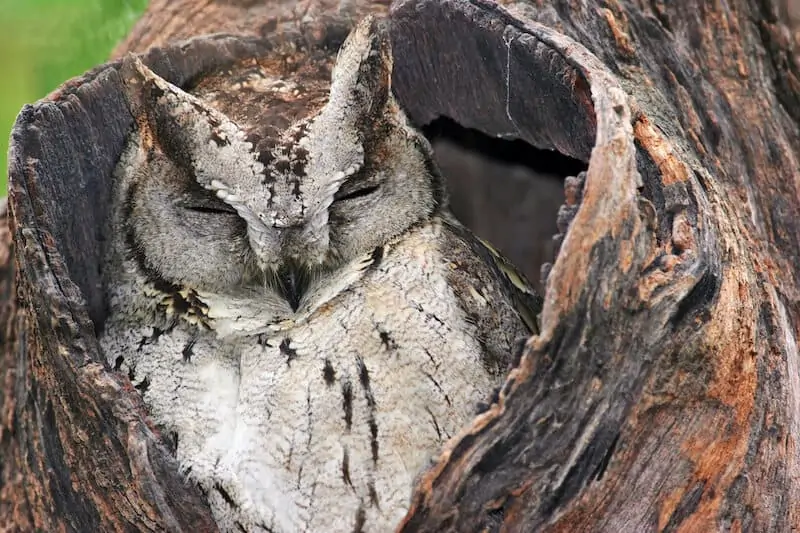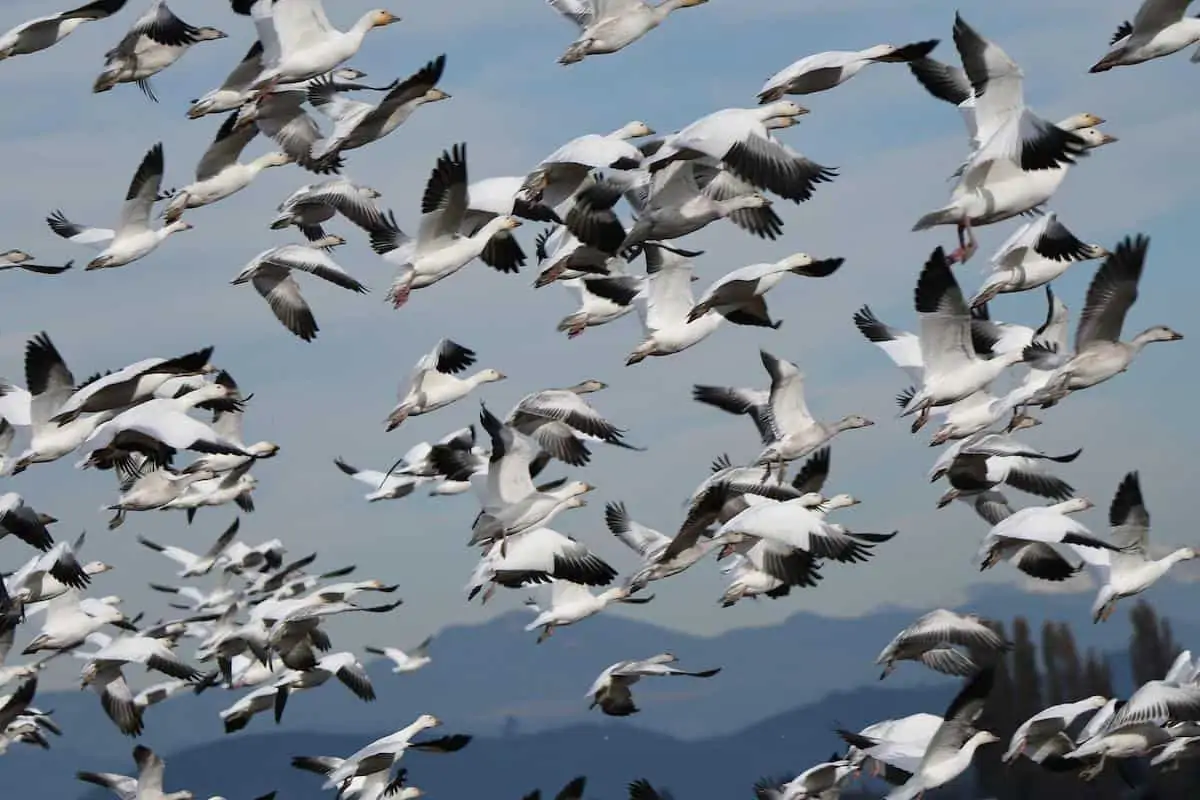Many bird species are strong long-distance travelers who may travel for many days, weeks, or even longer without stopping. When it comes to endurance flying, frigatebirds, swifts, and albatrosses are some of the most notable birds. Their talents, on the other hand, raise a slew of questions about how they do it. It’s natural to wonder how they relax and whether or not mid-air relaxation is possible.
As a result, can birds sleep while in the air? Why don’t birds get fatigued while flying? What else do birds do to relax? To learn more, continue reading on.
CAN BIRDS SLEEP WHILE FLYING?
Yes, some birds actually can sleep while flying. While it was always something people assumed, scientists finally found evidence of birds sleeping during flight.
Frigatebirds sleep with one half of their brain while flying, leaving the other portion awake, according to a research. In comparison to when they are on land, they also sleep very little. They sleep for roughly 45 minutes every day during a flight, in brief 10-second intervals. They spend 12 hours a day sleep in one-minute intervals on land.

The frigatebirds might sleep with both brains asleep and both eyes closed, in addition to half-brain slumber. Frigatebirds only sleep when they are climbing, according to scientists. Before gliding and gradually losing height, these birds will ascend via circling thermal updrafts. While flying down, they don’t sleep.
UNIHEMISPHERIC SLOW-WAVE SLEEP
Unihemispheric slow-wave sleep (USWS) is the term for this state of half the brain sleeping while half remains awake. Since it allows birds to stay partially awake to predators or other unforeseen ecological fluctuations, many birds may benefit from this sort of sleep. When one eye is closed while the other is open, it is on the side of the brain that is sleeping. This sort of sleep is also used by dolphins.
Several birds use this method of sleep while traveling to rest part of their brain while keeping one eye open and half awake to visually navigate the route. They can arrive at their destination in less time since they can ride for extended periods without stopping.
HOW LONG CAN A BIRD FLY BEFORE RESTING?
The Alpine swift, a bird famed for its long-distance flight persistence. They can fly for up to six months without resting! While hunting flying insects in the skies over West Africa, one recorded bird spent more than 200 days in the air. During flight, these birds sleep, eat, and breed.

Most species, on the other hand, will fly for 6 hours at 15 mph and 5 hours at 20 mph before requiring a break. Some birds, for example, can only fly for a few meters. Pheasants, quail, and grouse are examples of game birds.
DO BIRDS GET TIRED OF FLYING?
Birds are well-adapted to being in the air without feeling tired, in addition to being able to sleep while flying. Their bodies are well adapted to make flying as easy as possible, so they all get tired eventually.
Air resistance is reduced by birds, which allows them to manage their energy very well. Instead of struggling against the wind, they will fly whenever feasible. They glide to conserve energy by using air currents and thermal updrafts. Seabirds and hawks are superb gliders that can cover huge distances without having to flap their wings much as they ride flows.
Moving around a lot of weight is something that makes any creature tired. Birds’ bones are stronger and lighter than those of mammals because of their unique structure. They are hollow, which makes them significantly lighter, but their bones have special “struts” that keep them strong.
They don’t have jawbones and teeth, so their beaks are lighter than those of mammals. The tail of the majority of birds is made up entirely of robust feathers rather than bones.
DO BIRDS SLEEP IN NESTS OR ON BRANCHES?
Nests are not meant for relaxation, but rather for incubating eggs and raising chicks, as contrary to popular belief. When caring for the eggs or young of birds, you’ll often observe them sleeping on nests, but nests aren’t really employed as a “bird bed.”

Birds may rest on practically any surface as long as they have a solid base. Many species, such as owls, may sit on a limb and go to sleep. Birds may use a birdhouse, roostbox, tree cavity, or other corner to sleep in an enclosure. Dense foliage, such as thick bushes, are often a great place to sleep since they provide some shelter.
While clinging to the inside of chimneys, chimney swifts have been spotted resting. By standing on partially submerged rocks or sticks, shorebirds and waterfowl frequently sleep near the water’s edge. They perch on branches like birds, with one foot tucked inside their body.
WHY DO BIRDS FALL OFF THEIR PERCH?
Birds that fall off their perch are most likely sick, if you observe them. Heatstroke, a lung or brain disease that affects the bird’s lungs or brains, ataxia, where the bird loses control of its voluntary muscles. When they sleep, birds may also fall from their perch due to a startling or frightening experience.
When sleeping, birds usually keep their grip on the branch, preventing them from falling off. The muscles compel the tendons to contract and keep their foot shut even while they sleep, when they put weight on their feet.
CONCLUSION
Key takeaways
- Birds can sleep while flying in brief naps, with half of their brain awake.
- They can fly long distances without becoming fatigued because to their bird bones, lungs, wing shape, and ability to save energy.
- Birds can sleep on branches without falling off and don’t need to sleep in nests.
Even though it occurs in short bursts and only one-half of their brain rests at a time, birds may sleep while flying. These are strong, long-distance flyers that sleep, eat, and mate in the air without stopping for months at a time. During long periods of migration, most birds sleep only while flying.
